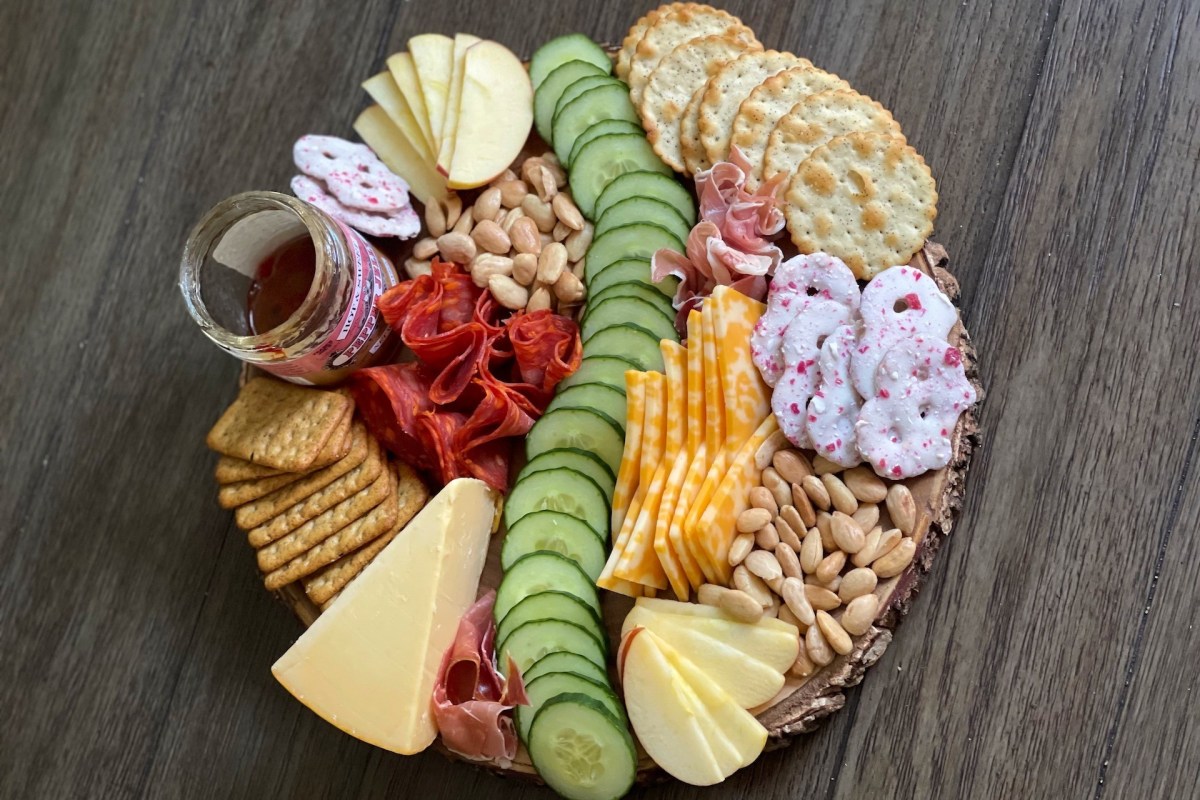Craving a beautiful, delicious charcuterie board but facing nut allergies? Fear not! This guide unveils the secrets to crafting a stunning spread bursting with flavor and visual appeal, entirely free of nuts. We’ll explore a vibrant array of nut-free alternatives, from creamy cheeses to colorful fruits and savory seeds, guiding you through every step of the process – from ingredient selection to artful arrangement and impressive presentation. Prepare to delight your guests with a nut-free masterpiece that’s both safe and spectacular.
Imagine a board teeming with rich textures and contrasting colors: sun-drenched tomatoes nestled beside emerald olives, creamy vegan cheeses alongside vibrant fruit preserves, and crunchy seed mixes adding satisfying pops of texture. This isn’t just about avoiding nuts; it’s about creating a culinary experience that’s both inclusive and unforgettable. We’ll provide recipes, substitution tips, and presentation ideas to ensure your nut-free charcuterie board becomes the star of any gathering.
Nut-Free Charcuterie Board Recipes & Variations

Crafting a nut-free charcuterie board requires thoughtful consideration of flavor profiles and textural contrasts to create a truly satisfying and visually appealing spread. The absence of nuts opens up opportunities to explore new ingredient combinations and highlight other delicious components. The following recipes showcase diverse flavor palettes, emphasizing the versatility of nut-free charcuterie.
Mediterranean Delight Charcuterie Board
This recipe focuses on the bright, fresh flavors of the Mediterranean, utilizing vibrant colors and a variety of textures. The combination of salty olives, creamy cheeses, and sweet fruits creates a balanced and harmonious taste experience.
- Ingredients: Sun-dried tomatoes, Kalamata olives, crumbled feta cheese, creamy goat cheese, artichoke hearts, cucumber slices, cherry tomatoes, a drizzle of high-quality olive oil, crusty bread, seed crackers.
- Instructions: 1. Arrange the sun-dried tomatoes, olives, and cheeses artfully on a platter. 2. Scatter the artichoke hearts, cucumber, and cherry tomatoes around the cheeses and olives. 3. Drizzle olive oil over the arrangement. 4. Serve with crusty bread and seed crackers.
The creamy textures of the feta and goat cheese contrast beautifully with the firm artichoke hearts and the juicy tomatoes. The salty olives and sun-dried tomatoes provide a savory counterpoint to the slightly tangy cheeses. The olive oil adds richness and depth, tying all the flavors together.
Spicy Southwestern Charcuterie Board
This vibrant board brings the heat with a selection of spicy and smoky flavors. The combination of creamy dips, crunchy vegetables, and flavorful meats creates a dynamic and exciting taste adventure.
- Ingredients: Mango salsa, pepper jack cheese cubes, chorizo (ensure it’s nut-free), sliced jalapeños (remove seeds for less heat), tortilla chips, black beans, corn, guacamole (ensure it’s nut-free).
- Instructions: 1. Arrange the mango salsa, pepper jack cheese, and chorizo in separate sections on a platter. 2. Place the jalapeños, black beans, and corn in small bowls or directly on the board. 3. Serve with tortilla chips and guacamole.
The creamy guacamole and pepper jack cheese offer a cooling counterpoint to the spicy chorizo and jalapeños. The sweetness of the mango salsa adds a delightful complexity, balancing the heat. The crunchy tortilla chips provide a satisfying textural contrast to the softer elements.
Sweet & Savory Autumn Charcuterie Board
This board embraces the flavors of autumn, blending sweet and savory elements for a comforting and delicious experience. The combination of rich cheeses, sweet fruits, and savory crackers provides a harmonious blend of tastes and textures.
- Ingredients: Fig jam (recipe below), cheddar cheese, apple slices, pear slices, dried cranberries, graham crackers, pretzel sticks.
- Instructions: 1. Arrange the fig jam, cheddar cheese, apple slices, and pear slices on a platter. 2. Scatter the dried cranberries around the other ingredients. 3. Serve with graham crackers and pretzel sticks.
The sweetness of the fig jam and dried cranberries complements the sharpness of the cheddar cheese. The crispness of the apple and pear slices provides a refreshing textural contrast to the creamy cheese and jam. The graham crackers and pretzel sticks offer a salty counterpoint to the sweetness of the fruits and jam.
Homemade Nut-Free Fig Jam
This recipe creates a delicious and versatile fruit spread perfect for charcuterie boards or as a topping for toast or yogurt.
- Ingredients: 1 lb fresh figs, ½ cup granulated sugar, ¼ cup water, 1 tbsp lemon juice.
- Instructions: 1. Wash and chop the figs. 2. Combine figs, sugar, water, and lemon juice in a saucepan. 3. Bring to a boil, then reduce heat and simmer for 20-30 minutes, stirring occasionally, until the figs have softened and the mixture has thickened. 4. Let cool completely before serving or storing.
The fig jam’s rich sweetness provides a wonderful counterpoint to savory cheeses and crackers on the charcuterie board. The slight tartness from the lemon juice balances the sweetness of the figs, creating a complex and delicious flavor.
Dietary Considerations and Substitutions
Creating a truly inclusive and safe nut-free charcuterie board requires careful consideration of various dietary restrictions and potential allergens beyond nuts. A seemingly simple board can easily become problematic if not planned meticulously. This section will explore common allergens and dietary needs, offering suitable substitutions to ensure everyone can enjoy a delicious and safe spread.
Common Allergens Beyond Nuts
Beyond nuts, several other common allergens can trigger severe reactions. These include dairy, soy, eggs, wheat, fish, shellfish, and sesame. When assembling your board, meticulously check all labels to confirm the absence of these allergens. Cross-contamination is also a significant concern; use separate cutting boards and utensils for allergen-containing and allergen-free items to prevent accidental exposure. Clearly label each item to avoid any confusion. For instance, a vibrant green label could indicate “Dairy-Free,” a bright yellow label could mean “Gluten-Free,” and a bright red label “Nut-Free.” Visual cues will greatly assist those with dietary restrictions in selecting safe options.
Dietary Restrictions and Substitutions
Three common dietary restrictions, besides nut allergies, are dairy, gluten, and soy. Providing suitable substitutions for these is crucial for creating an inclusive board.
Dairy-free alternatives abound. Instead of cheeses, consider using dairy-free cheeses made from soy, nuts (if permissible within the broader nut-free context, such as cashew cheese), or coconut. For creamy elements, opt for dairy-free dips like hummus or cashew-based cream cheese alternatives (again, ensure nut-free versions are used).
Gluten-free options are readily available. Many crackers and breads are now produced without gluten. Look for crackers made from rice, corn, or gluten-free flour blends. Avoid cross-contamination by storing gluten-free items separately.
Soy is another prevalent allergen. Many processed meats and some condiments contain soy. Always check labels carefully. Soy-free alternatives include various meats, gluten-free sausages, and condiments that do not list soy in their ingredients.
Adapting for Various Dietary Needs
Adapting a nut-free charcuterie board for vegan, vegetarian, or gluten-free diets requires thoughtful ingredient selection.
For vegan boards, eliminate all animal products. Use vegan cheeses, plant-based meats, and fruit-based spreads. Many delicious vegan alternatives to traditional charcuterie items are readily available. Consider marinated olives, roasted vegetables, and vegan dips such as avocado or white bean dips.
Vegetarian boards can include cheeses (dairy or dairy-free), cured meats (vegetarian alternatives), and a variety of fruits, vegetables, and breads. Focus on colorful, texturally diverse options.
Gluten-free boards necessitate the use of gluten-free crackers, breads, and other accompaniments. Ensure all ingredients, including sauces and dips, are certified gluten-free to avoid cross-contamination.
Sourcing Nut-Free Ingredients
Sourcing nut-free ingredients that meet specific dietary needs requires careful attention to labeling and sourcing. Shop at stores specializing in allergy-friendly products, where ingredients are clearly labeled and cross-contamination risks are minimized. Look for certifications, such as those from reputable organizations verifying gluten-free or vegan status. When purchasing from bulk bins, be extra cautious to avoid cross-contamination by using your own containers. Directly contacting manufacturers to inquire about their production processes and potential allergen exposure is a proactive step to ensure ingredient safety.
Creating a nut-free charcuterie board is more than just avoiding allergens; it’s about embracing creativity and crafting a visually stunning and delicious spread. By thoughtfully selecting ingredients, mastering the art of arrangement, and considering dietary needs, you can transform a simple snack into a culinary showstopper. Remember, the key lies in the balance of colors, textures, and flavors. So gather your ingredients, unleash your inner artist, and prepare to impress with a nut-free charcuterie board that’s as delightful to the eye as it is to the palate. The possibilities are endless – go forth and create!
Expert Answers
What if someone has a soy allergy?
Carefully check all ingredient labels for soy derivatives. Many cheeses and processed meats may contain soy. Choose items explicitly labeled “soy-free” or opt for fresh fruits, vegetables, and clearly labeled soy-free alternatives.
Can I make this board ahead of time?
Many components can be prepared in advance. Prepare the fruit spread and arrange cheeses and other non-perishable items a day ahead. Add delicate items like fresh berries and leafy greens just before serving to maintain freshness and vibrancy.
How do I store leftovers?
Store leftovers in airtight containers in the refrigerator. Separate items to prevent flavor transfer and ensure proper food safety. Consume leftovers within 2-3 days.
What are some good nut-free crackers to include?
Look for crackers made from rice, corn, or other grains. Many brands offer gluten-free and nut-free options. Check labels carefully to confirm the absence of nuts and any other potential allergens.


